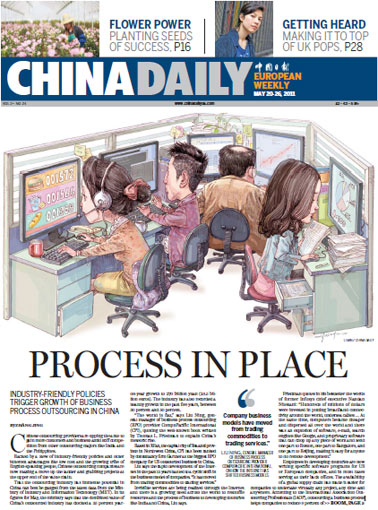Technology
Chinese telecom firms fight for rights
Updated: 2011-05-11 14:09
By Shen Jingting and Chen Limin (China Daily)
Companies being more proactive in protecting their intellectual property
BEIJING - Chinese telecom companies that have expanded into overseas markets are taking an increasingly tough line in defending their intellectual property rights (IPR) and fighting off the IPR claims of overseas rivals.
The latest case involves Huawei Technologies Co Ltd, the world's second-largest telecom equipment maker, which took legal action in a US district court in January against Motorola Solution Inc.
The move by Huawei is being seen by experts as a notice of intent from the Chinese company that it will act more aggressively in future when it believes its rivals have infringed on its intellectual property rights.
The protection of IPR and enforcement of rules that safeguard them are among issues being discussed at the third China-US Strategic and Economic Dialogue.
Huawei has been involved in a series of IPR disputes and has faced accusations from international rivals, including Cisco Systems Inc and Motorola.
China's second-largest telecom equipment maker, ZTE Corp, has also been the subject of allegations from rivals but has actively disputed many such claims and has come back fighting by saying it is, in fact, the victim of infringements.
In April, Ericsson AB filed lawsuits against ZTE in the United Kingdom, Italy and Germany, alleging patent infringements related to its second and third generation mobile technologies.
To the surprise of many observers, ZTE launched a counter-claim against Ericsson within 10 days, claiming the Chinese unit of Ericsson had infringed upon the patents held by second generation GSM products and fourth generation LTE products that are sold in China.
The targets of lawsuits being generated by Chinese companies are not limited to foreign rivals but also domestic competitors. The latest example of this came when Huawei sued ZTE for alleged patent infringement in Europe on April 28.
Another way that Chinese telecom companies choose to protect their intellectual property is to apply for more patents.
China's international patent filings under the Patent Cooperation Treaty of the World Intellectual Property Organization surged by 56.2 percent to 12,337 patents in 2010. The country now leads the world in growth in international patent filings with a 4.8 percent increase during that period, according to a Xinhua News Agency report that cited figures from the Geneva-based organization.
ZTE has 33,000 patents, so far. It filed 1,863 patents under the Patent Cooperation Treaty in 2010, rising to second place from the 20th place it held in 2009. Huawei had 40,148 patents by the end of March and ranked fourth in 2010 on the organization's list of the largest patent holders.
Li Mingde, director of the Intellectual Property Center with the Chinese Academy of Social Sciences, said Chinese companies may benefit from an expanding intellectual property base, especially when they are the holders of high-quality patents.
"Chinese companies will feel calm when they have a strong patent pool. In addition, they can fight proactively if necessary, instead of merely defending themselves," Li said.
E-paper

Green works
Wuxi becomes 'test case' for facing country's environmental challenges
Preview of the coming issue
The global rise of Chinese brands
China-EU trade on solid ground
Specials

The song dynasty
There are MORE THAN 300 types of Chinese operas but two POPULAR varieties are major standouts

Cut above the rest
One of the world's oldest surgeons has performed more than 14,000 operations

From the ground up
Architect of Guangzhou Opera House has many projects under way, including 2012 Olympics.




